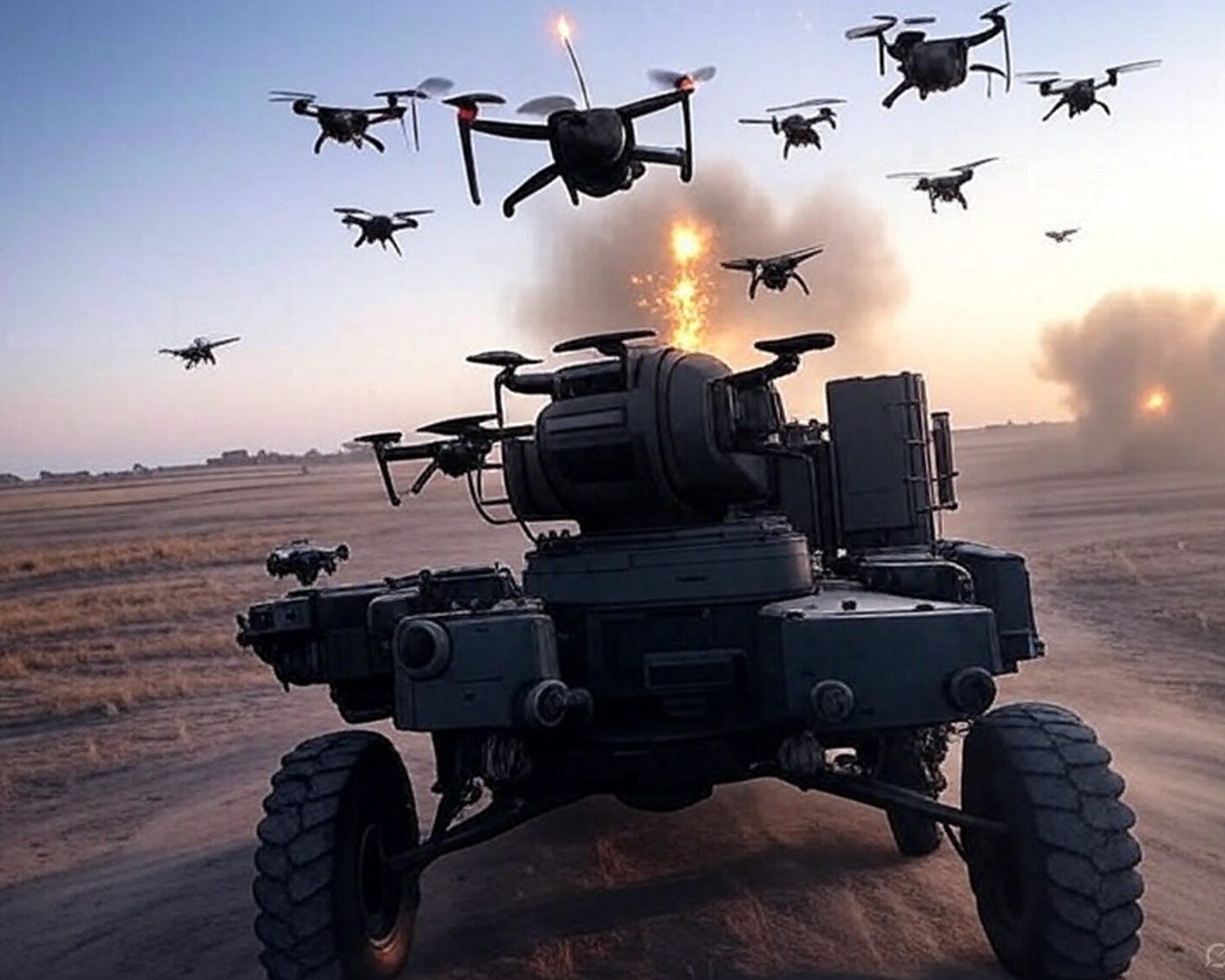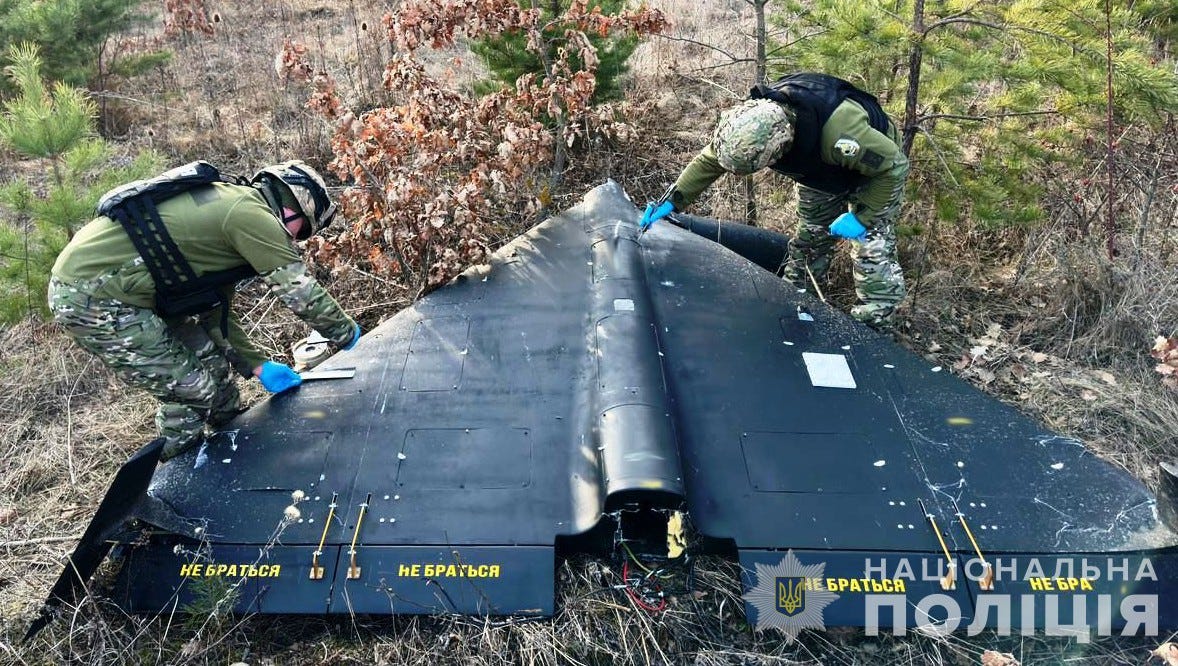How to kill drones
Counter-drone tech: from doodlebug killing to lasers
DISRUPT, DISRUPT, DISRUPT!
Aerial drones are the defining feature of early 21st-century warfare. How can you stop them? We asked Ron Smith, the former Head of Future Projects at Westland Helicopters, to review the history and latest innovations in counter-drone warfare. We examine the dark art of counter-drone technology, ranging from acoustic sensors and lasers to jammers and app-based ‘Observer Corps,’ as well as the recent emergence of dedicated ‘Fighter-Killer’ drones.
The Ukraine conflict has brought to the world’s attention, often through terrifying video footage, the utility and threat of drones or Uncrewed Air Systems (UAS). This has been further highlighted by the extensive use of such systems by the IDF in operations within Gaza and Lebanon. We’ll start with a quick overview of the main ‘flavours’ of modern drones.
High Altitude Long Endurance (HALE) surveillance and electronic intelligence gathering, often from stand-off locations (e.g. RQ-4 Global Hawk). These platforms are typically unarmed and use synthetic aperture radar and optical / IR sensors. These can also be key nodes for network-enabled warfare, passing real-time intelligence material via SATCOMS. The manned U-2 performs similar roles, perhaps with additional emphasis on SIGINT.
Medium altitude long endurance (MALE) systems (such as Watchkeeper, MQ-1 Predator, MQ-9 Reaper, IAI Heron, Elbit Hermes 450 and Hermes 900) capable of armed attack (Hellfire, Spike, etc), SIGINT, EW, etc. Both HALE and MALE systems can also provide targeting for precision long-range artillery systems, such as MLRS, HIMARS and other systems.
·Stand-off systems (including loitering munitions), launched from a distance; this covers a remarkable spectrum of unmanned systems ranging from ballistic missiles (ground-launched), air-launched hypersonic missiles, cruise missiles (air, land, sea and sub-sea launched) and glide bombs and loitering munitions.
Russian examples of the latter include ZALA Lancet, Shahed (cropped delta with 6-900 mile range and 30-50 kg warhead), and Geran-2. These systems have a range of capabilities which extend to swarm usage to degrade air defences, SIGINT to refine route planning to avoid air defence systems (Scout Geran), and GLONASS satellite navigation with ‘antenna interference suppression’ to minimise effects of EW jamming (Geran-2). Large numbers of Shahed drones, flying at low level and often at night. Have been prominent in attacks on the Ukrainian power distribution infrastructure. The term ‘Kamikaze drone’ is in popular use, and though catchy is rather imprecise and muddies the waters.
· Short-range tactical drones. The drones (often using operator goggles to provide FPV – First Person View) are used to attack local targets ranging from individual armoured vehicles down to individual enemy soldiers. These drones are closely related to commercial drones (usually of quadcopter configuration) and operating at relatively short range.
Counter-drone
MALE systems providing near-continuous overhead surveillance and targeting can only really be operated over territory where the drone operator has air superiority. The implication in Ukraine, therefore, is that targeting information is being provided by satellite, or by stand-off surveillance from Russian-controlled territory, or by other intelligence means.
In respect of stand-off systems, ballistic and hypersonic / cruise missile defence has primarily to be provided by Patriot or equivalent systems, although conventional air defence systems (missile, or radar-directed cannon) will have some utility.
For the moment, the large number of long-range Shahed drones, with significant warhead capability, is the key concern, together with the Geran system, which is already showing the implementation of counter-countermeasures features.
There are many examples of short-range tactical drones being used by both sides. These are non-autonomous, short range and subject to local control.
DISRUPT, DISRUPT, DISRUPT!
From a defence perspective, the options for negating the UAS threat are based on attacking one or more of the system capabilities. Listed below are potential avenues to explore:
Keep reading with a 7-day free trial
Subscribe to Hush-Kit Aviation Newsletter to keep reading this post and get 7 days of free access to the full post archives.





